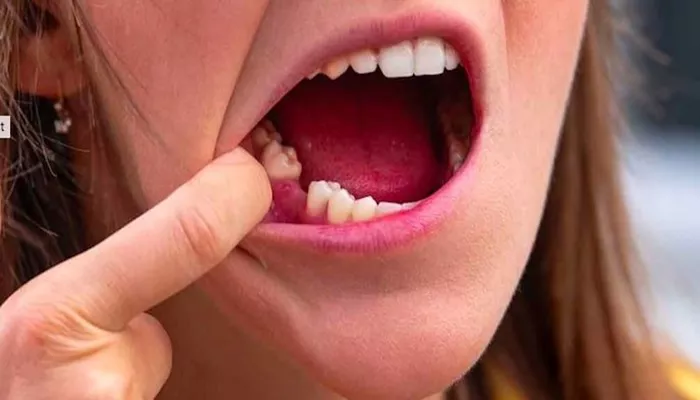Tooth extractions are routine dental procedures. However, not all extractions are the same. Some teeth are much harder to remove than others due to their location, root structure, or surrounding tissue. So, what tooth is hardest to remove? This article provides a detailed analysis of the most challenging tooth extractions and the reasons behind their complexity.
We will explore common dental issues, including gum inflammation and complications that arise during difficult tooth extractions. This guide is essential for patients preparing for dental surgery or those simply seeking knowledge about their oral health.
Which Tooth Is Hardest to Remove?
The Third Molars: Also Known as Wisdom Teeth
Wisdom teeth, or third molars, are widely regarded as the hardest teeth to remove. These teeth are located at the very back of the mouth. Most people have four wisdom teeth—two on the upper jaw and two on the lower jaw. Their position, size, and frequent impaction make them especially difficult to extract.
Why Wisdom Teeth Are So Challenging
Several factors contribute to the difficulty of removing wisdom teeth:
- They often erupt at awkward angles
- They may be partially or fully impacted under the gums or bone
- They have multiple and curved roots
- Limited access at the back of the mouth makes surgical procedures harder
What Makes a Tooth Extraction Difficult?
Impaction
An impacted tooth is one that fails to erupt properly into the mouth. Impacted teeth are surrounded by gum tissue, bone, or both. This condition is common with wisdom teeth but can occur with other molars as well. Impacted teeth require surgical removal, often involving the cutting of gums and bone.
Tooth Location
Back molars, especially those in the lower jaw, are typically more difficult to remove due to limited visibility and access. The dense mandibular bone adds an extra layer of difficulty for dentists during extractions.
Root Structure
Teeth with long, curved, or multiple roots are more complicated to extract. Roots that diverge or wrap around nearby structures, such as the sinuses or nerves, increase the risk and complexity of removal.
Surrounding Bone and Tissue
Bone density around the tooth can impede extraction. In some cases, the surrounding bone must be removed to extract the tooth safely. Thick gum tissue or gum inflammation can also make extractions more painful and challenging.
Other Teeth That May Be Difficult to Extract
Canines (Cuspids)
Upper canines are known for having the longest roots of any tooth in the human mouth. They can be challenging to remove if they are impacted or located high in the upper jaw near the sinus cavity.
First Molars
These molars can sometimes be difficult due to their root structure and early involvement in decay. Extensive damage or previous root canal treatments may make extraction more complex.
Complications That Can Arise During Difficult Extractions
Gum Inflammation
Gum inflammation can complicate extractions by making the tissue more sensitive and prone to bleeding. Inflamed gums also increase the risk of infection during and after the procedure.
Dry Socket
Dry socket is a painful condition that occurs when the blood clot at the extraction site becomes dislodged. It is more common in difficult extractions, especially with wisdom teeth. The absence of a protective clot exposes nerves and bone, causing severe pain.
Nerve Damage
In some cases, especially with lower wisdom teeth, the roots may be close to the inferior alveolar nerve. Improper technique can lead to temporary or permanent numbness or tingling in the lower jaw, lips, or tongue.
Sinus Perforation
Upper molars and canines are located near the sinus cavity. Their extraction may occasionally create a small opening into the sinus, requiring additional treatment to close the communication.
Techniques Dentists Use for Difficult Tooth Extractions
Surgical Tooth Extractions
Unlike simple extractions, difficult cases often require a surgical approach. This involves cutting into the gum tissue, removing surrounding bone, and sectioning the tooth for removal in pieces.
Use of Dental Instruments and Technology
Advanced tools, such as elevators, forceps, and dental drills, allow for greater control during complex extractions. Some practices use 3D imaging to plan the procedure and avoid complications.
Conscious Sedation or General Anesthesia
For complex extractions, sedation helps manage patient comfort and allows the dentist to work efficiently. Options range from local anesthesia to general anesthesia, depending on the case.
Post-Extraction Care for Difficult Removals
Pain Management
Over-the-counter pain medications like ibuprofen help reduce pain and swelling. In more severe cases, prescription medication may be provided.
Preventing Gum Inflammation
To avoid gum inflammation post-extraction, follow these tips:
- Rinse with salt water after 24 hours
- Keep the area clean
- Avoid smoking and alcohol
- Follow prescribed antibiotics or antiseptic rinses
Healing Timeline
Initial healing takes about 1 to 2 weeks, but full bone and tissue regeneration may take several months. Follow-up visits help monitor recovery and identify complications early.
How to Prepare for a Difficult Extraction
Consultation and X-rays
Before any extraction, a thorough examination and X-ray are essential. These tools allow the dentist to evaluate the root structure, bone density, and proximity to nerves and sinuses.
Medical History and Medications
Inform your dentist of all medical conditions and medications. Certain health issues, like diabetes or bleeding disorders, can complicate extractions and healing.
Aftercare Planning
Arrange for transportation, prepare soft foods, and stock up on any prescribed medications. Proper planning ensures smoother recovery after complex tooth extractions.
Conclusion
Wisdom teeth are generally the hardest to extract due to impaction, root complexity, and their position in the mouth.
However, other teeth—like upper canines or molars—can also present significant challenges. Understanding what makes a tooth extraction difficult helps you prepare for the procedure. Managing gum inflammation, choosing an experienced dentist, and following proper aftercare instructions are critical to a successful outcome.

